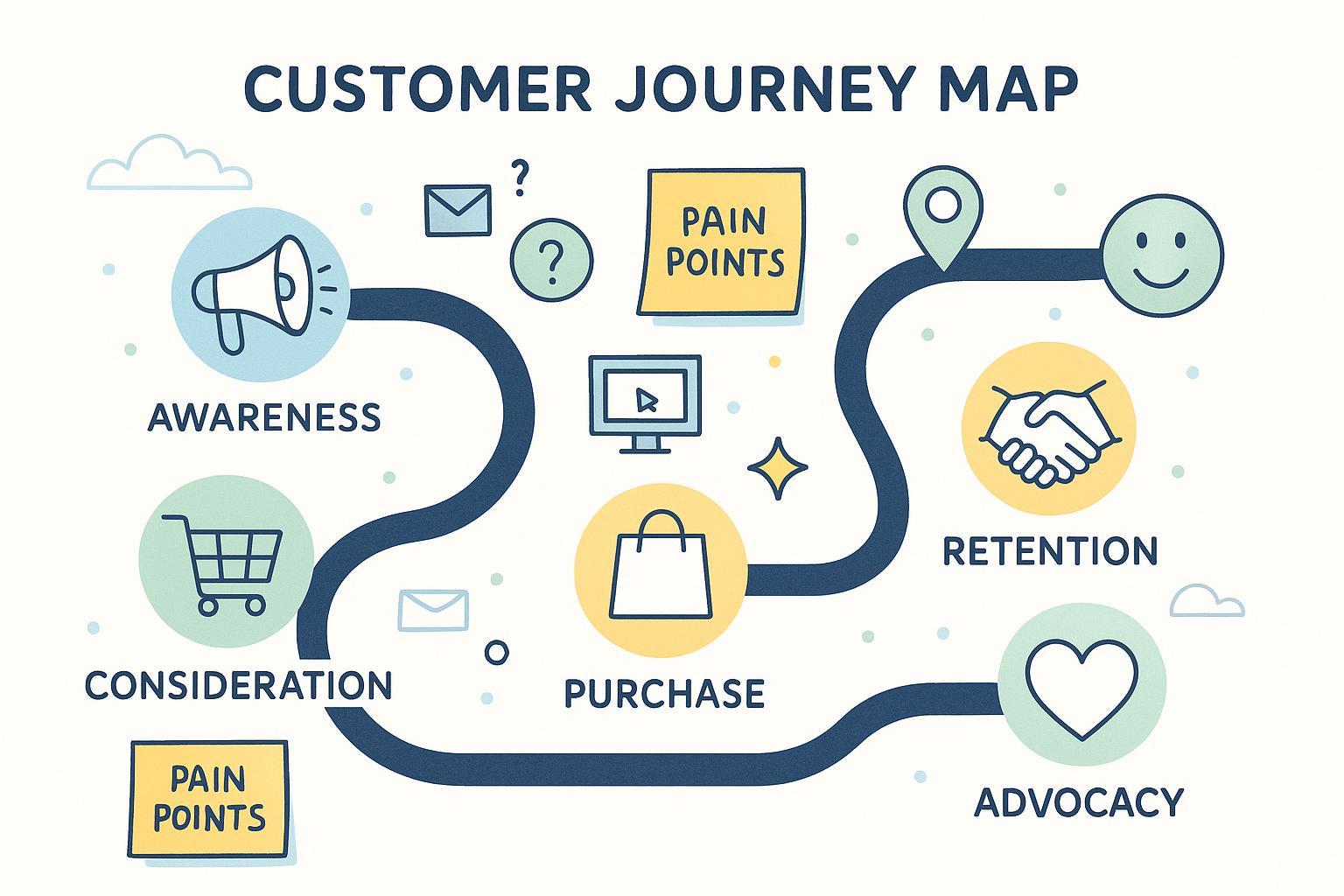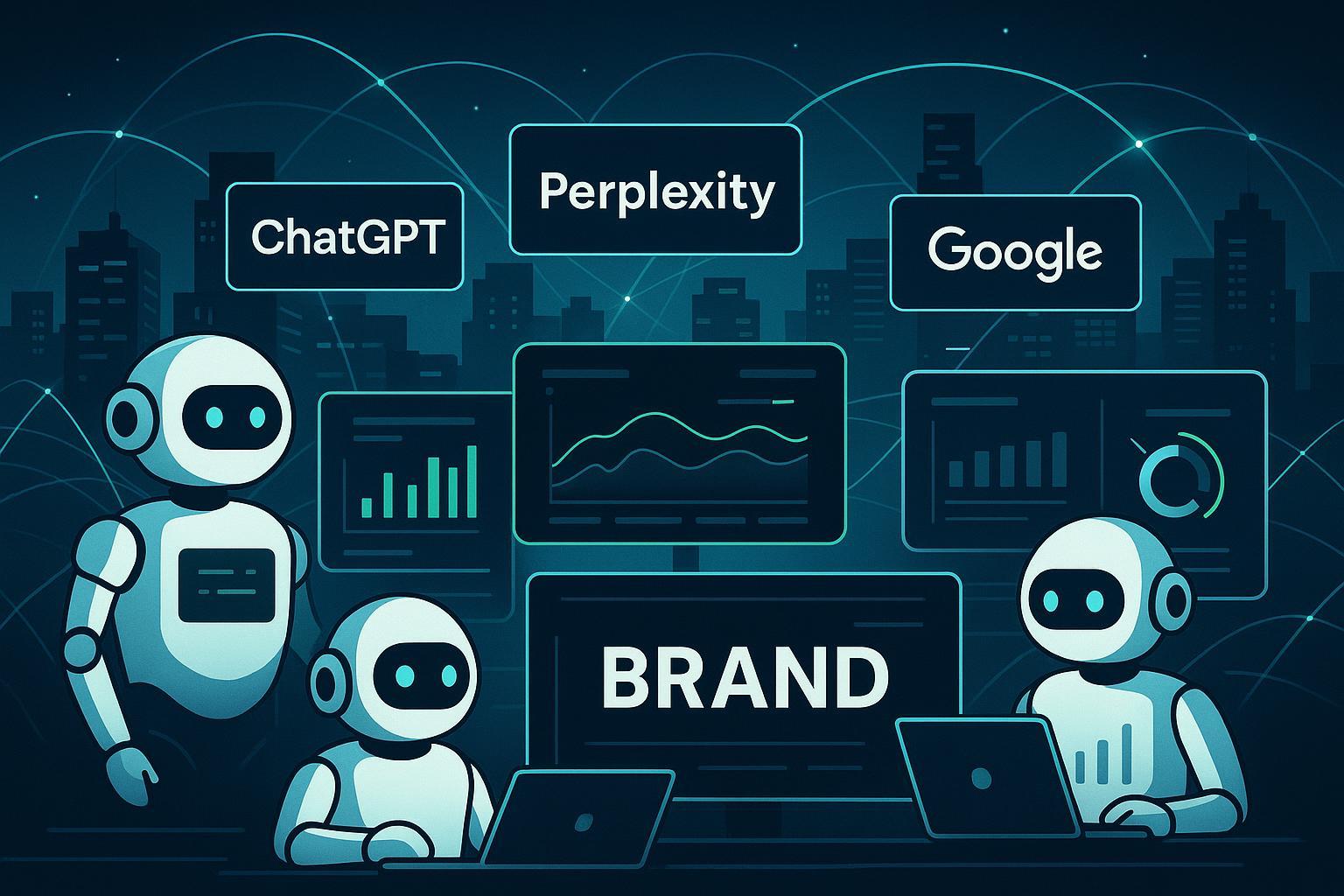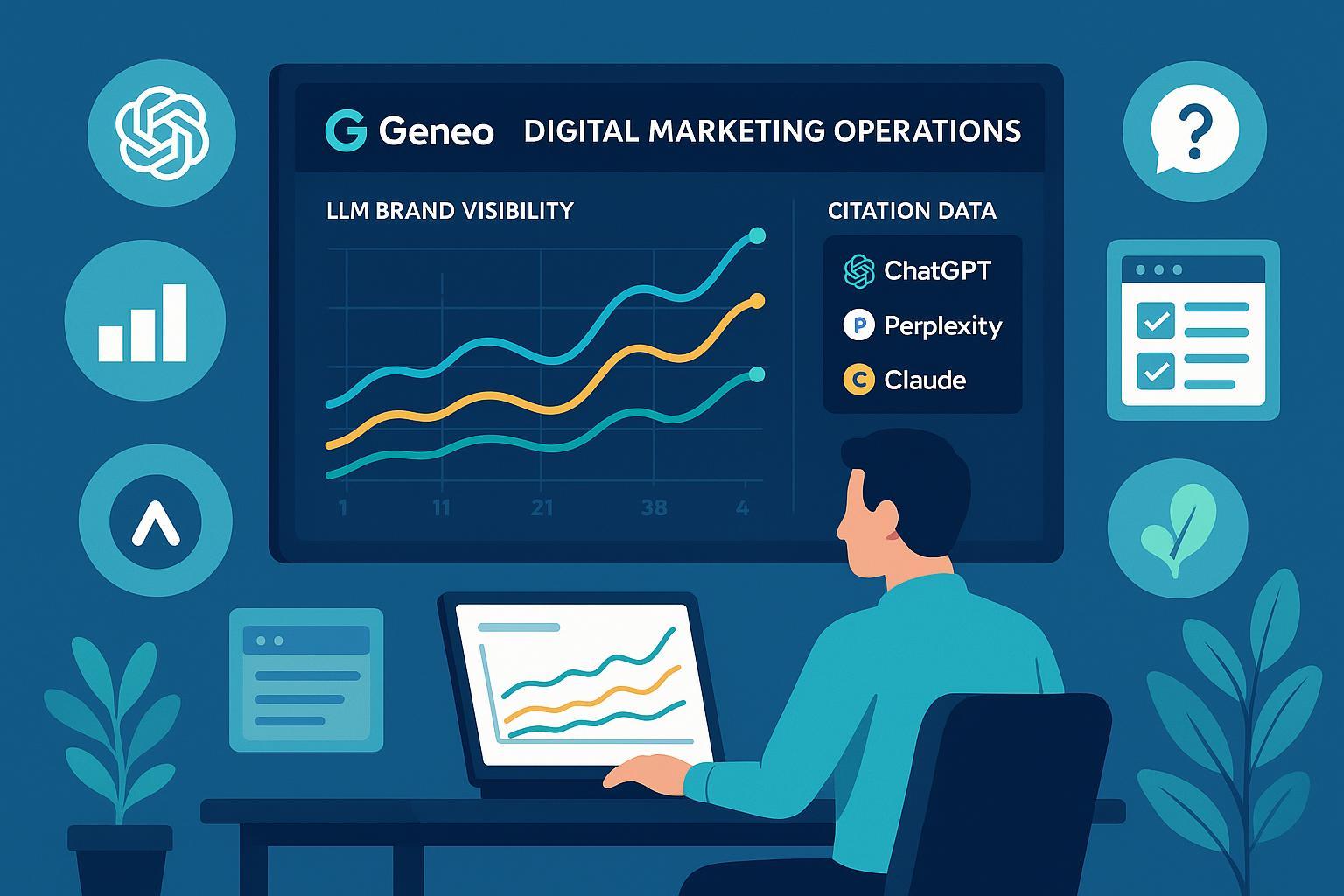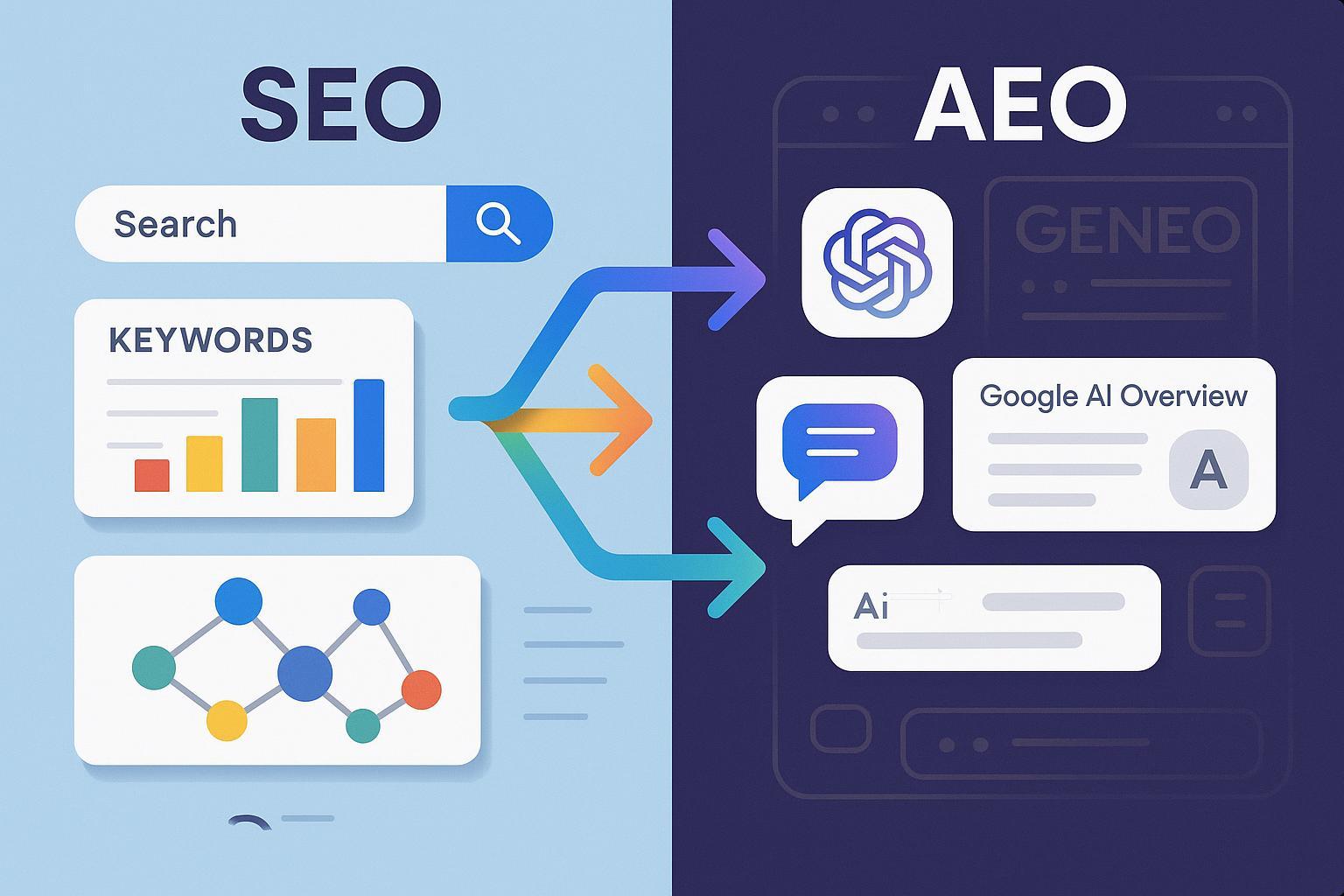Customer Journey Mapping Beginner Guide: Step-by-Step for 2024
Comprehensive beginner guide to customer journey mapping. Learn what it is, why it matters, and how to create your first map with clear steps and examples.


Table of Contents
- What is Customer Journey Mapping?
- Why is Customer Journey Mapping Important?
- Key Elements Explained
- Types of Customer Journey Maps
- Step-By-Step: How to Create a Customer Journey Map
- Case Study and Hands-On Practice
- Common Mistakes & Best Practices
- Summary – Your Key Takeaways
- Next Steps & Resources to Keep Growing
What is Customer Journey Mapping?
A customer journey map is a visual representation of every experience a customer has with a business, product, or service — from the very first moment they hear about you, all the way through to becoming a loyal advocate.
Think of it like a story map, tracing:
- The different stages a customer passes through
- All the touchpoints (places and moments they interact with you)
- Their emotions, motivations, and pain points at every step
- The channels they use (website, phone, in-store, etc.)
In Plain English: It’s a bird’s-eye view of what your customer goes through—what works for them, what frustrates them, and where you have opportunities to make things better.
Why is Customer Journey Mapping Important?
Mapping the customer journey isn’t just a “nice-to-have”—it’s a proven path to:
- Understand your customers: Discover what they’re really thinking, feeling, and needing.
- Fix pain points: Identify spots where customers get stuck, frustrated, or abandon you.
- Boost satisfaction and loyalty: Happy journeys = happy customers who return and recommend you.
- Improve your business: Find concrete ways to enhance products, services, and processes.
- Increase ROI: Companies with strong journey maps see higher conversion rates, retention, and revenue (Aberdeen Group).
Did you know?
Brands who invest in customer journey mapping see a 54% greater return on marketing investment and 3.5x more revenue from referrals (McKinsey, Aberdeen).
Key Elements Explained
Let’s break down the key building blocks—no jargon, just plain meaning:
- Customer Persona: A fictional character that represents your ideal customer (age, needs, goals, behaviors).
- Stages: The distinct phases a customer goes through (e.g., Awareness → Consideration → Purchase → Onboarding → Loyalty).
- Touchpoints: Any time a customer interacts with your brand (website visit, store entry, support call, email, ads, etc.).
- Channels: Where the touchpoints happen (online store, app, phone, in-person, etc.).
- Customer Actions: What the customer is doing or deciding at each moment.
- Emotions: How the customer feels at every step (excited, confused, satisfied, frustrated).
- Pain Points: Friction, problems, or annoyances that get in the way or cause drop-off.
- Opportunities: Where (and how) you can improve things to create a smoother, more delightful experience.
Key Term Callout:
- Persona: Think "Jane, a busy mom shopping online after work."
- Touchpoint: Clicking “Add to Cart” or calling customer support.
- Channel: The mobile app, your physical store, or your chatbot.
Types of Customer Journey Maps
To match different goals, there are several common journey map types:
-
Current State Map
- What it is: Shows how things work today—actual customer behaviors, feelings, issues.
- Use when: Starting out or troubleshooting current experiences.
-
Future State Map
- What it is: Visualizes how you want the experience to work in the future—your “north star.”
- Use when: Planning improvements, new launches, or ideal scenarios.
-
Empathy Map
- What it is: Focuses deeply on what the customer thinks, feels, says, and does. Great for insight!
- Use when: Building deep understanding and designing for emotion.
-
Service Blueprint
- What it is: Includes both the customer journey and your supporting processes behind the scenes.
- Use when: Coordinating customer experience with internal workflows.
Pro Tip: Most beginners start with a Current State Map for a familiar service to master the basics.
Step-By-Step: How to Create a Customer Journey Map
Let’s walk through a simple, beginner-friendly journey mapping process. Grab a notebook or open a blank template to follow along!
1. Define Your Goal
- Example: "Understand why new users drop off during sign-up."
- Make it specific, measurable, and focused!
2. Build a Customer Persona
- Describe their age, needs, motivations, habits.
- Give your persona a name to make it real (e.g., “Busy Brenda: 32, wants a quick checkout, dislikes long forms”).
3. List the Stages
- Common stages: Awareness → Consideration → Purchase → Onboarding → Loyalty/Advocacy
- For simple mapping, 4–6 stages is plenty.
4. Identify Touchpoints and Channels for Each Stage
- Where and how does the customer interact? (e.g., Facebook ad, product page, live chat)
5. Map Customer Actions and Emotions
- What is the customer doing at each stage?
- How do they feel? Excited, frustrated, lost, delighted?
6. Find Pain Points and Opportunities
- Where do they hesitate, get confused, or give up?
- What could you do to help them or remove friction?
7. Visualize the Map
- Layout the stages left to right. List persona at the top.
- For each stage, create rows for touchpoints, actions, emotions, pain points, and opportunities.
- Use icons, sticky-notes, or color coding for clarity.
Case Study and Hands-On Practice
Step-by-Step Walkthrough: Food Delivery Example
Let’s map the journey for “Sam,” ordering food via a delivery app for the first time.
| Stage | Touchpoint | Action | Emotion | Pain Point | Opportunity |
|---|---|---|---|---|---|
| Awareness | App Store Ad | Browses ad | Curious | None | Clear value in ad |
| Consideration | App homepage | Views restaurants | Hopeful | Too many options | Offer a guided quiz |
| Purchase | Menu page | Selects items | Rushed | Confusing fees | Fee breakdown upfront |
| Checkout | Payment screen | Enters info | Frustrated | Form errors | Autofill fields |
| Retention | Order status | Waits, rates | Anxious | Unclear timing | Real-time tracking |
| Advocacy | Follow-up email | Shares review | Happy | None | Referral bonus |
Reflection Prompt:
- What touchpoint could you improve? (e.g., simplify checkout)
- How might you ease Sam’s emotions at “Checkout” or “Retention”?
Now Try It Yourself
- Pick a service you recently used (ordering coffee, calling support, online shopping).
- Draw the main stages across the top.
- Fill in the basic persona, then at each stage: list the touchpoint, action, emotion, and pain point.
- Highlight one thing you could improve.
Common Mistakes & Best Practices
Watch out for:
- Mapping from your company’s view, not the customer’s! Always step into your customer’s shoes.
- Relying only on your assumptions—use real customer feedback, surveys, or support logs whenever possible.
- Ignoring stages before and after the “sale” (awareness and loyalty matter a lot!).
- Making maps but not acting on them; always use your findings for real-world improvements.
- Letting maps get out-of-date—review them regularly as customers and products change.
Beginner Best Practices:
- Start small with a familiar service.
- Work from real feedback, not just opinions.
- Use simple tools: paper, PowerPoint, Canva, or dedicated apps (see links below).
- Keep your first map clear and actionable rather than perfect.
- Review and revise—mapping is meant to be iterative.
Summary – Your Key Takeaways
- Customer journey mapping gives you a powerful lens to see your business from the customer’s eyes.
- Break the journey down into stages—and for each, uncover touchpoints, emotions, and pain points.
- Use real feedback, clear personas, and simple tools; perfection isn’t necessary to start!
- Maps should always lead to improvement actions—not just pretty diagrams.
- The more you practice, the more valuable your maps will become.
Next Steps & Resources to Keep Growing
Want to Go Further?
- Try mapping a more complex journey (e.g., online shopping to in-store pickup).
- Experiment with other map types: empathy maps and service blueprints.
- Team up! Invite a friend or coworker for feedback.
- Use your map to propose a real improvement and measure what changes.
Recommended Tools
- Miro: miro.com (collaborative online whiteboard, with free templates)
- Lucidchart: lucidchart.com (diagramming, great for beginners)
- Canva: canva.com (user-friendly templates and graphics)
- Google Drawings/PowerPoint: Free, easy for basic mapping
Further Reading & Learning
- 'Mapping Experiences' by Jim Kalbach
- 'This Is Service Design Doing'
- NN/g Journey Mapping 101 (free articles & videos)
- CXL Institute Customer Journey Mapping Course
Community & Support
Remember: Every expert began as a beginner. Your first journey map won’t be perfect—but with each attempt, you’ll unlock new insights and deliver better experiences for your customers!
Last updated: 2024-06-21





